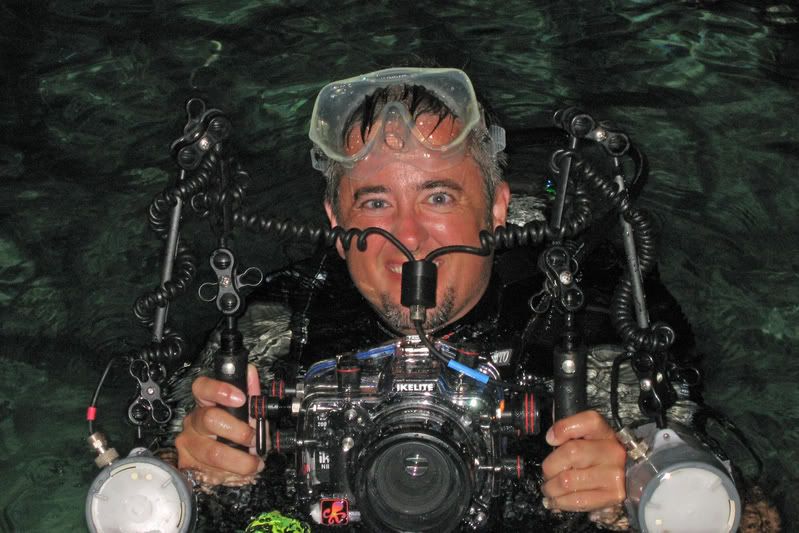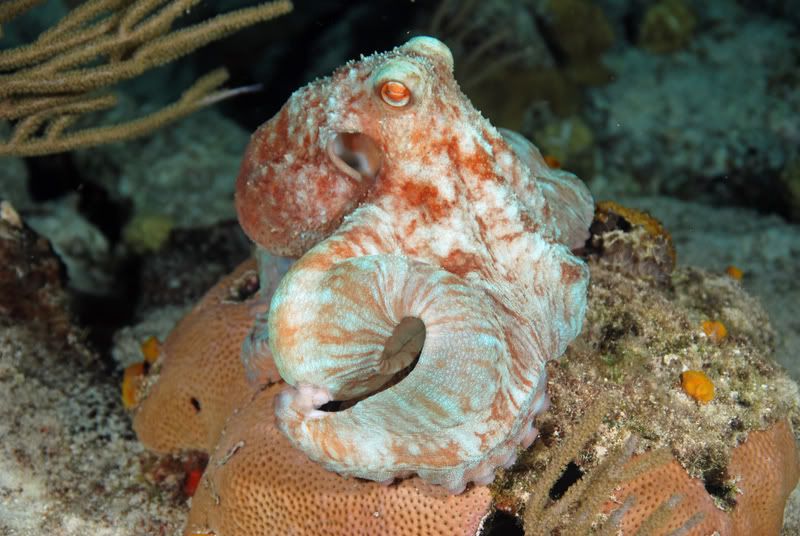I would personally leave the camera in your room for your first night dive, unless its a bright full moon. Take it out for the second. Night diving has its own task loading, even in good vis. It can be disorrientating, even if you are diving a familiar site. Don't forget that aside from your camera gear, you'll need a primary flashlight (at least a 4C size), a backup flashlight, and a tank light.
That being said, a pns (and even a dSLR) will often have a hard time focusing without some kind of external light source such as a focus light or flashlight. They won't focus in the dark very well. You have three basic options:
1. Hold the camera in one hand and illuminate your subject using a flashlight in the other hand. For macro, you might even be able to hold a smallish flashlight in your second hand while you steady the camera with that hand.
2. Attach a focus light to the camera. This is sometimes a small flashlight (which is what I do) or it could be an "official" focus light (much more money). I use an Ikelite Mini-C flashlight with an LED48DX clear diffuser to even out the lighting. This is attached to my camera rig using a couple of ULCS arms/joints/adaptors.
3. Use a slave strobe that has an integrated modeling light. You may already have this. Its not as good as a dedicated focus light but handier than handholding a flashlight. It will suck down the strobes battery. It also gives suboptimal subject lighting since your strobe is probably illuminating from an angle.
Typically, at night I'll use two DS-125 strobes (with or without the modeling lights on) and the Mini-C focus light. When I was cenote diving, I was able to position the DS-125 modeling lights such that I used them as my only flashlight (they are powerful) and knew that whatever they illuminated was in the center of my image. All I had to do (for wide angle) was point the camera to illuminate my subject and pull the trigger. I've even done this for close-up wide angle (octopuses and such).
This is my setup without the focus light which would normally be centered over the housing, on an arm that splits off of one of the handles.
And here's a nighttime octopus, just for the heck of it.








